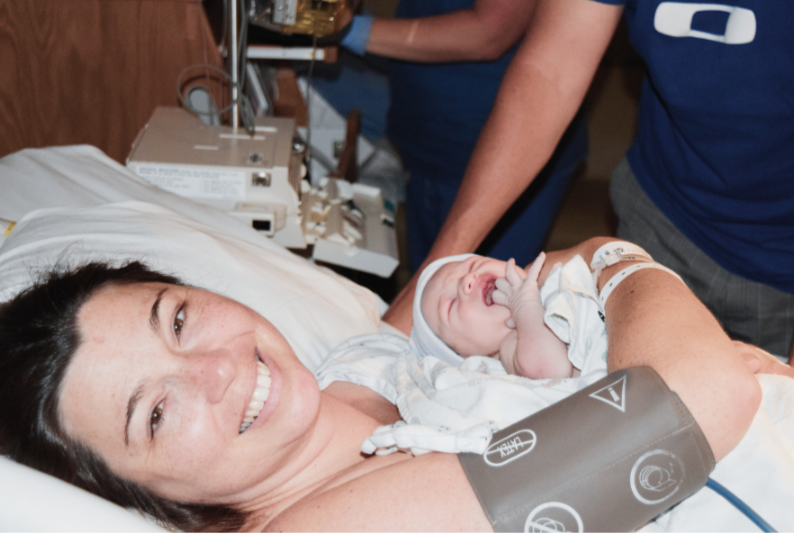
Possible Trigger Warning: Induction, birthing on back, instrumental birth
In preparation to celebrate my eldest daughter’s upcoming birthday this past weekend, I decided to dig out old photos from her labour and birth – a journey into a labyrinth that began just over nine years ago. I look back at myself with a gentle lovingness and a deep appreciation of just how naïve and unaware I was of what was about to happen. But, if I had known then, what I know now as a mother and experienced birth professional, my birth story may have turned out very different.
Let me start by saying that the birth of my first baby was overall a positive experience. Although not without drama, I do not feel traumatised or scarred from it. I felt love and support from all my labour nurses and from my doctor. It was a defining, transformational moment in my life, one that is imprinted on my heart forever.
There were also some definite key learning moments that I’m eager to share now, in hopes that others might keep them in mind, especially those who might be preparing to navigate through their own rite of passage of birth (or know someone who might be about to).
Full disclaimer: my thoughts that I share here should not be taken as medical advice. I’m not recommending anyone to do what I did or to think the same way as I did, as everyone’s situation is unique. Finally, I am not trying to pass judgment on anyone out there who would choose differently than me. I embrace the fact that we are all different and make decisions differently. My only aim with sharing my own experience and what I have learned since then is to potentially offer others a perspective about the “cascade of intervention,” a situation that can be all too common for women during their birth experience.
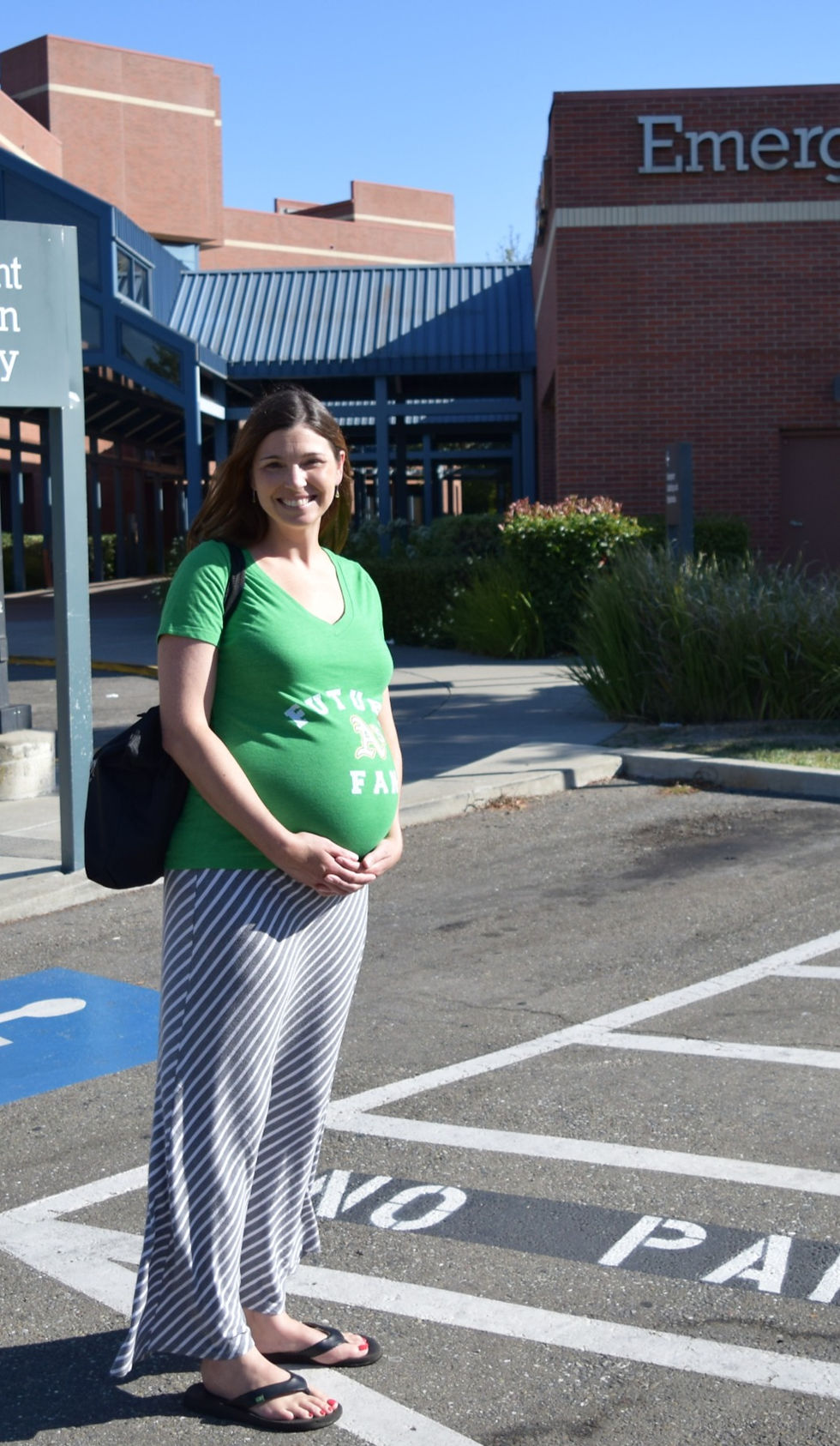
On August 24, 2014, we arrived at the hospital in the late afternoon for my 39-week medical induction. Due to my high-risk pregnancy stemming from a rare auto-immune condition, my doctor had always said that she did not want to take any unnecessary risk, as we were unsure of how “sufficient” my placenta was. Ultimately, she wanted to induce labour because 1) the Maternal Fetal Medicine perinatologist consulting her recommended an induction; and 2) because of her own past experience with few but “bad birth outcomes” in cases similar to mine. Notice my language here, as it is intentional: “She” as in, my doctor, wanted to induce. Not, “I.”
At the time, I remember thinking, “Hmm, maybe my body just doesn’t work like it should.” I thought, “I have this high-risk condition; they think my placenta is wearing out; and my body is not starting labour fast enough to protect my baby. My doctor seems concerned, and my doctor knows best, right?”
I wish I knew that it was ultimately my choice as to whether to induce and what the right timing might have been. I did not know that I could have asked for another Biophysical Profile (BPP) to assess how my baby was doing in utero that 39th week. A BPP involves ultrasound imaging to look at baby’s breathing movements, body movements, muscle tone, amount of amniotic fluid, and continuous monitoring for normal accelerations of the fetal heart rate (also known as a non-stress test). A score of 8-10 is indicative of normal fetal well-being, and the chance of fetal asphyxia (lack of oxygen) within 1 week of the test is extremely rare[1]. Perhaps if I had this test, and it had came back normal, I could have given myself more time for natural labour to start, even if it was just a couple of days.
But in the end, I did not ask for this test (not knowing that I could) nor did my doctor offer me this option. She just scheduled me that 39th week to come in when the timing would enable her, as my primary doctor, to attend the birth. I genuinely think that my doctor’s advice was driven by her concern for my baby’s welfare, and that she was acting with good intentions and with my best interests in mind. However, the manner in which she presented the plan for induction felt more like a directive than a recommended option for me to choose. Looking back, I was quick to be compliant with her plan, and unconsciously handed over my autonomy and self-determination.
Although I was a registered nurse at the time, I did not specialise in labour and delivery yet. I had worked on a medical-surgical floor, taking care of mostly chronically diseased older people. My knowledge about labour and birth stemmed from a very brief maternity clinical rotation in nursing school and a short hospital childbirth education class. I figured this would be enough preparation for my own birth. But, in reality I had no idea how this baby was going to come out. Also, in terms of support, I did not feel the need to hire a doula (if I only knew I would become one!), as my husband and parents would be by my side.
We arrived onto the Labour and Delivery Unit feeling excited, but slightly timid, and not in any kind of labour. I remember saying “Hi, ummm, I’m here to have my baby.” I was shown to my birthing room where I immediately changed into a hospital gown, and got in the bed. I was placed on continuous monitoring, where it stayed on for the next 36 hours until my daughter was born. Before any induction agent was given, an intravenous (IV) catheter was placed in my wrist, and I started receiving a continuous infusion of lactated ringer’s solution at 125 millilitres per hour that would remain running until after the birth.
A couple of items to note here (again, if I had known):
I didn’t have to change right away into the hospital gown. But the hospital gown has a funny effect. Because of our social conditioning, the gown sends a subconscious message to you and everyone around, that the person wearing it is a “patient” and is in the hospital because they need medical help. The gown does not suggest that you are here for a natural process, such as labour. I didn’t know that I had the option of wearing my own clothes, or nothing at all. I was following the expected hospital norm.
I didn’t have to get in the bed straight away. But the bed is in the centre of the room, and it’s like a magnet that draws you in, pulling you to it. The bed is where all the clinical stuff happens like CTG monitoring, vaginal exams, and the placement of the IV, and it is most convenient for the medical staff if you remain there for most of your labour. But it is not the most ideal place for a birthing woman, if she intends to have an upright, active birth.
There was no reason for me to have a continuous IV infusion, at least in the beginning anyway. I was fully capable of staying hydrated by drinking oral fluids. The first induction agent used was the Cervidil insert, which is placed near the cervix usually overnight for 12 hours. I was not feeling any painful contractions at all, and did not require pain relief. I did not need any continuous infusion until the following morning when the Pitocin drip (synthetic oxytocin hormone) was started. But yet, I had to deal with getting tangled in the annoying IV tubing all night, every time I had to get up to go to the toilet, to go for a walk, etc. Not to mention that by the time my daughter was born, I was so swollen with IV fluids! Just check out the pictures from that first day to 2 days later after the birth – and you can see the puffiness and swelling in my whole face.
I didn’t know that I still had a choice as to whether I could eat food. It was recommended by my doctor to me and my husband that we eat dinner before we arrived for the induction, because it was standard hospital policy that no food was allowed after being admitted, with the exception of clear liquids. As a result, I did not eat anything for 36 hours. Now, I know that this is a very outdated policy that is not supported by evidence from the latest research. Food and drink should not be restricted in labour – especially early labour [2].

The Cervidil vaginal insert (a prostaglandin to soften the cervix) was placed that evening and we waited for things to start happening. We waited, and waited and waited some more. For me, the contractions that the Cervidil produced felt like mild cramping (though I know they could feel much stronger for others). We walked the halls, played our favourite family board game, The Settlers of Catan, and had a Spades card game tournament. Every one of my family members came to visit me “in early labour” (Ahh, those were the good ol’ days before Covid limited visitors). We were all incredibly excited to meet my baby, as she would be the first grandchild in my side of the family.
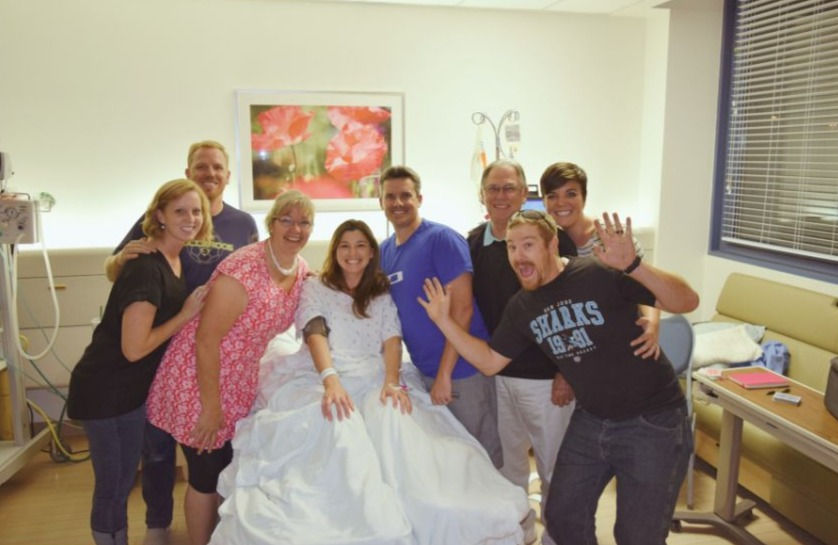
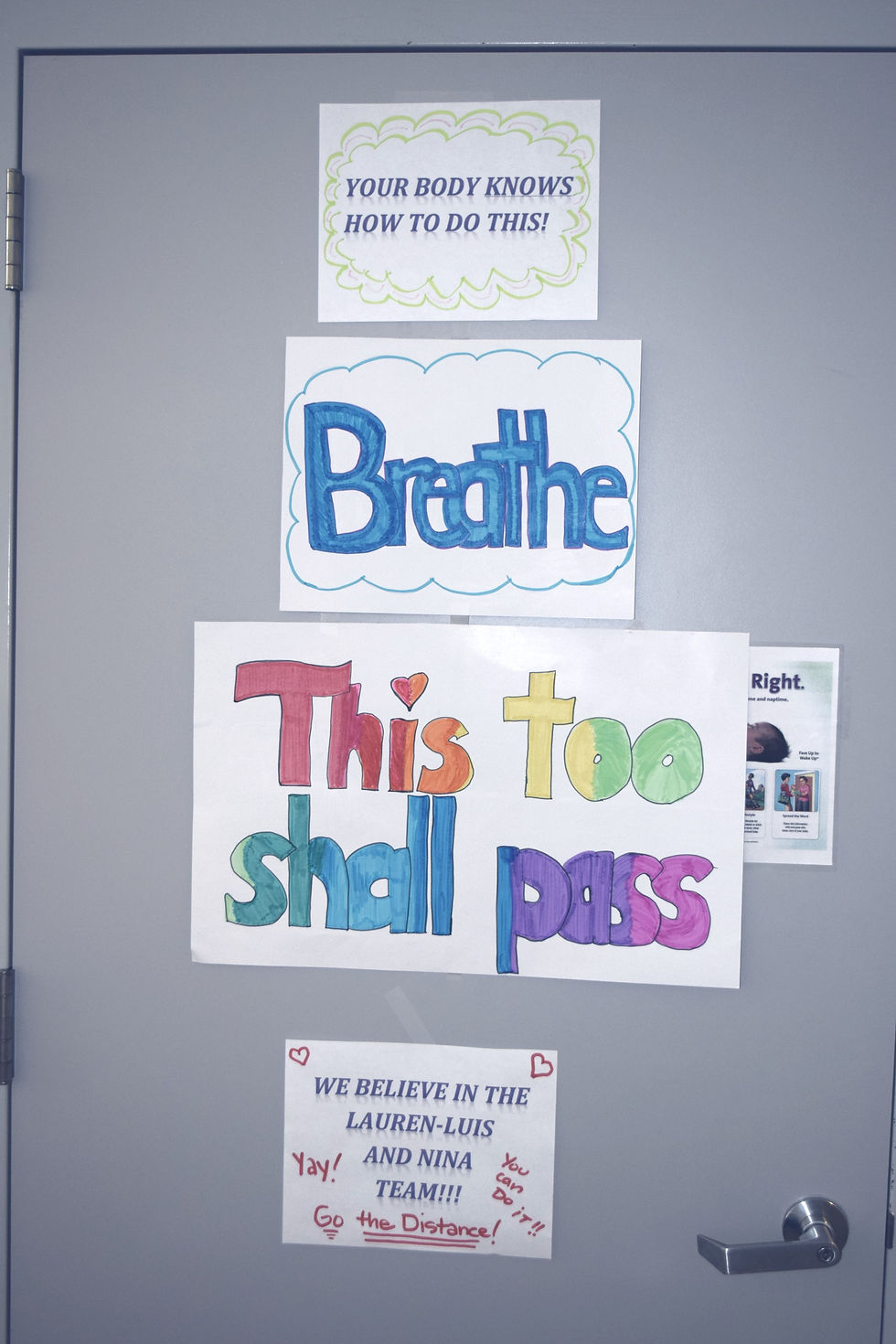
After a not-so-great, restless night’s sleep, the next morning I was hooked up to the Pitocin continuous infusion. Pitocin (or known as Syntocinon in Australia) is a synthetic oxytocin that is infused into your blood stream and targets the oxytocin receptors in the uterus to contract. (Note: In Australia, this is not the usual induction process. The next step after Cervidil would usually be would be to break your bag of waters, and then the Syntocinon drip if needed. In the US, these steps are in the reverse order.) But unlike endogenous (naturally secreted) oxytocin, Pitocin does not cross the blood brain barrier - so it does not make you feel the happy, love feeling, and does not prompt the release of beta-endorphins (natural opiates) to help you naturally manage the labour pain. So, suffice it to say, the contractions the Pitocin brought on became very strong, very quickly, as my labour nurses kept increasing the dosage per their titration protocol (to achieve goal of three strong contractions in 10 mins).

That brings me to asking for my epidural. It was about 3pm that Monday afternoon (almost 24 hours after being admitted) and I was “only” about 3-4 centimetres dilated. At that time, I did not have any reservations about getting an epidural to manage labour pain. I doubted my mental and physical ability to handle the pain. I thought, “doesn’t everyone get one?” and “I’m not trying to be a hero going all-natural” and “if there was a way to have this baby without feeling the pain, why wouldn’t I take that option?” I take full ownership that the epidural was in my birth plan all along.
Admittedly, I did not do any research nor was I advised by my care providers as to how the epidural might affect my labour, my pushing efforts, my birthing position, and the delivery itself. All I knew was that I was feeling the most pain I had ever felt in my life, and I wanted relief.
And indeed, the epidural was magic. I had a terrific anaesthesiologist that placed the epidural catheter swiftly and in perfect position in my back. One minute I was breathing, sweating, moaning through contractions, the next minute, those sensations were completely gone. I was then able to sleep, and my body and the Pitocin would continue to push my labour on and keep dilating my cervix.
Even after having the epidural, I wish I would have known the importance of staying active to enhance cervix dilation and help the baby move down into my pelvis more efficiently. Being active could have included changing my positions and using tools like a peanut ball, which is literally an oblong ball shaped like a peanut, placed between my legs. It was not until years later when I became a labour and delivery nurse that I learned about recent studies showing that strategically using a peanut ball during labour – and especially with epidurals – can help baby to rotate down into the ideal position for birth, and shorten the overall length of the first and second stages of labour[3].
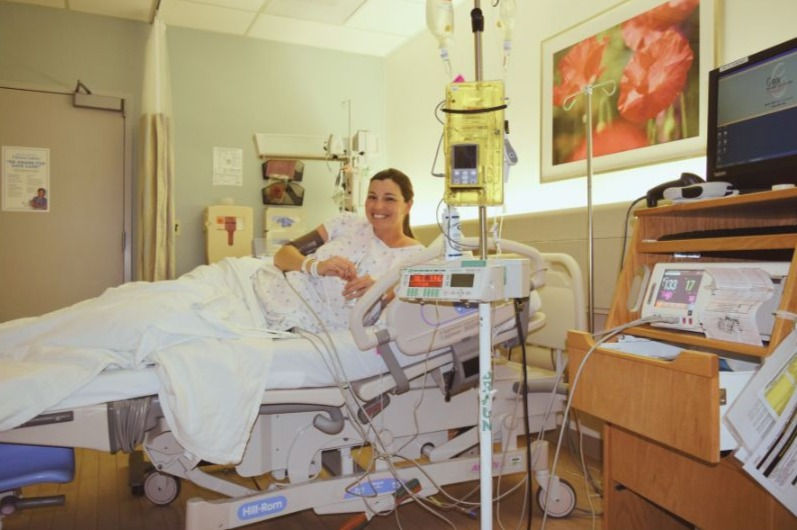
At 6pm my doctor came in to break my water (I was 5 cm) and by midnight (33 hours after being admitted) I was completely dilated. It was now time to push.
What I didn’t know about my epidural was how difficult it would be to hold my legs during the pushing stage of labour. My legs were very difficult to move, and were so heavy, that my husband and my nurses had to help me hold them up for most of my pushing time.
I didn’t know that with an epidural it was inevitable that I would give birth on my back. I was able to push at certain times on my side, but neither position really helped me make significant or efficient progress in my pushing efforts. The epidural meant I could not be fully upright to use gravity to help move the baby down. The lithotomy position (on your back, legs raised) is most convenient for medical providers, but it is quite possibly the worst birthing position. It limits the expansion of your sacrum joint by up to 30% [4] and is the position where you can sustain more severe perineal tears[5].

I also didn’t know that with the epidural, the continuous dosage of the fentanyl/bupivacaine infusion would be so heavy that I could not feel the contractions to push. In my case, I had to be directed to push, rather than just feeling my body’s own natural urges (because they were anaesthetised). I didn't know that we could have called the anaesthesiologist back to reduce the dose to lessen the effect of the numbness and heaviness, so that I could maneuver to a better position, and actually feel the contractions and the urge to push. It took me the first hour of pushing to get in any kind of rhythm, and get the hang of it. After 90 minutes, I was starting to lose confidence as it did not seem I was making progress. The fear and worry were building. The emotions and tears were flowing. The nurses said they could see the baby’s blonde hair. I didn’t believe them so they brought in a mirror to show me. I really thought we were headed to the operating theatre for a c-section.
At 2:15 am (35 hours after being admitted), I was really tiring out and my baby girl started to show she was getting tired of the labour as well. Her heart rate dropped to 80-90 beats per minute during each contraction, and was slow to come back up. They put me on oxygen, an attempt to maximise oxygen getting to baby. (Note: nowadays they actually do not – or should not – use oxygen as an intervention for intrauterine resuscitation, as it is not shown to be effective and can actually cause free radicals to build up in the baby).
At 2:30 am, my doctor and a whole team of medical professionals flooded in the room. It was time to expedite delivery. At this point, I was pleading, begging for my doctor to come in and save me. My doctor said, “Ok, Lauren, it’s time to do this. We are going to do this together. I’m going to use the vacuum. I’m still going to need you to push as hard as you can, I can’t do this without you.” I nodded ok and she placed the suction cup on my baby’s head. She pulled, I pushed, and the first pull did not do much. With the next contraction she pulled a second time, and at 2:53 am on Tuesday, August 26, 2014, my baby girl, Nina was born. I will forever be grateful for my doctor and her incredible skills in that situation, because at that moment she helped my baby girl arrive safely in this world.
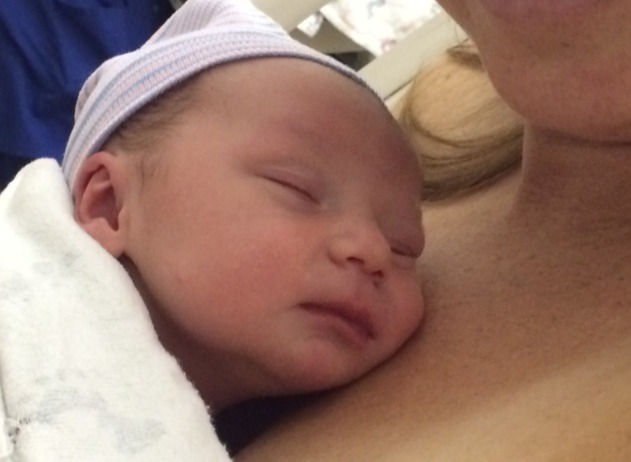
I had pushed for nearly three hours. I had a vacuum (ventouse)-assisted vaginal birth, and thankfully only sustained a second-degree perineal tear. Unfortunately, Nina sustained a large suction-cup sized abrasion to her head, and developed a cephalohematoma (accumulation of blood under the scalp in the periosteal space), which ultimately lead to her developing jaundice. Thankfully, she did not have to be treated with a NICU admission or bili-lights. But she had to have early supplementation of formula and had heel sticks for repeated blood tests to monitor bilirubin levels. Her head healed rather quickly (babies actually heal at super-mutant speed), and thankfully, she sustained no permanent damage.
Perhaps my only regret about the whole experience was the way I felt about myself immediately after the birth. I remember apologising to my husband, my parents, and my doctor. I was sorry that I could not do it on my own and that I could not have done it without my doctor’s help. I know hindsight is always in focus, but looking back I wish I did not doubt myself. I wish I had more faith in my body, in my own ability, and faith in the process of birth. It took a long time to come to terms with this and to appreciate that I was still the one who delivered my baby.
Looking back, I also can recognize the sequence of events that led from one intervention to another, known as the “cascade of intervention.” From the induction to the Pitocin to the epidural, the likelihood of me having an instrumental delivery was greatly increased. Furthermore, because the obstetric culture and hospital system generally trusts medical intervention over the natural labour process, it was no surprise that I had the experience that I did.
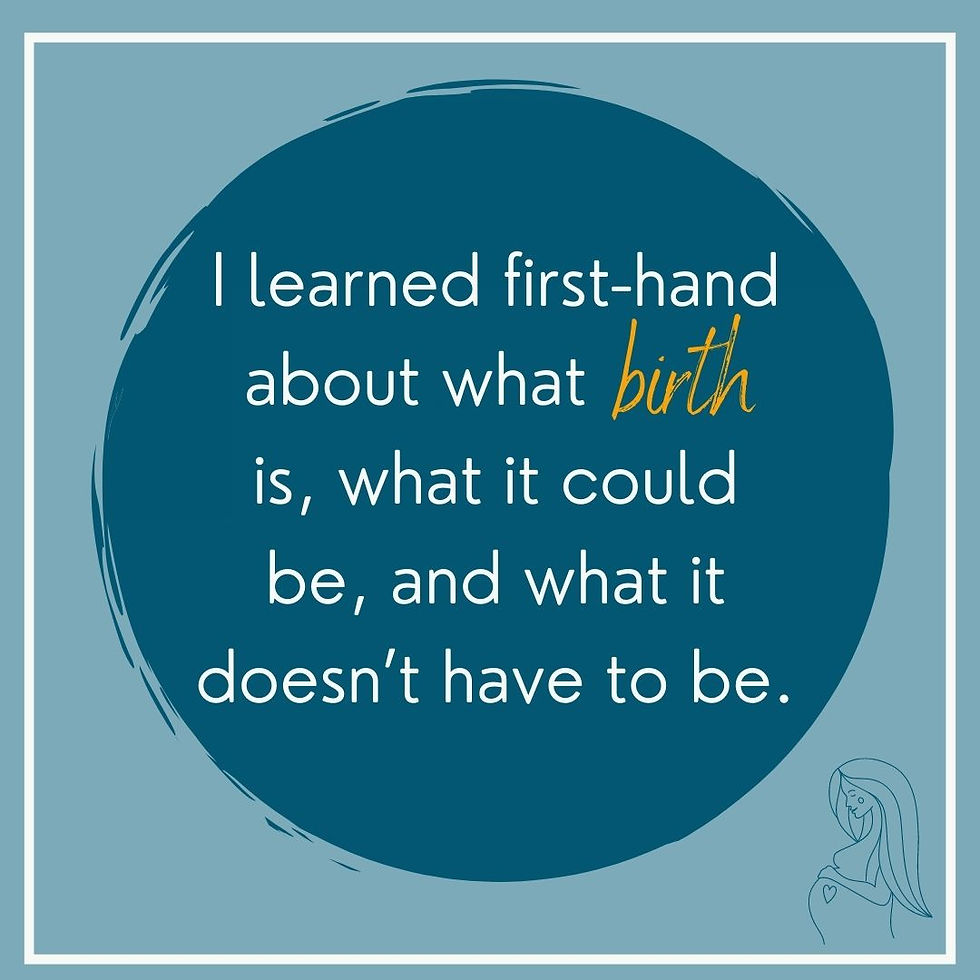
Since then, I have emerged strong. I have given myself grace and self-compassion. I look back at myself – a girl who was transformed into a woman and mother – with nothing but the utmost self-love and reverence for birth. That was my first-hand education about what birth is, what it could be, and what it doesn’t have to be. You only know what you know, and you don’t know, what you don’t know. Without going through this birth, I would not be the mother and passionate birth advocate I am today.
That passion is simply to help all birthing women know their options, trust in their natural ability, and find their innate power, so they can have the most empowering and beautiful birth experience imaginable. I hope my story helps give women some things to think about as they navigate their birth process. Thank you for reading my story. Go forward and birth well!
Sources:
[1] Sapoval J, Singh V, Carter RE. Ultrasound Biophysical Profile. [Updated 2023 Jan 16]. In: StatPearls [Internet]. Treasure Island (FL): StatPearls Publishing; 2023 Jan-. Available from: https://www.ncbi.nlm.nih.gov/books/NBK539866/
[2]Singata M, Tranmer J, Gyte GML. Restricting oral fluid and food intake during labour. Cochrane Database of Systematic Reviews 2013, Issue 8. Art. No.: CD003930. DOI: 10.1002/14651858.CD003930.pub3
[3]Kamath P, Pai M, Shenoy R, Karkada S, D’souza S, Noronha J. Effectiveness of a peanut ball device during labour on maternal and neonatal outcomes: protocol for a randomised controlled trial. F1000Res. 2022 Nov 21;11:717. doi: 10.12688/f1000research.109537.2. PMCID: PMC9727314.
[5] https://evidencebasedbirth.com/evidence-birthing-positions/#:~:text=The%20researchers%20found%20that%20the,delivered%20in%20the%20lithotomy%20position .

Beautifully written, and a powerful reflection of your journey to be by the side of new mothers who are seeking to deepen their birth experience with forethought, confidence, compassion and grace!